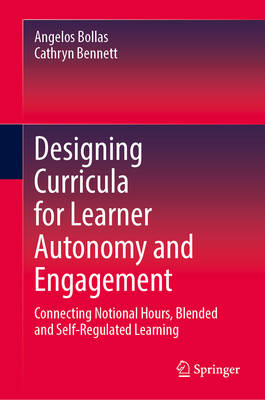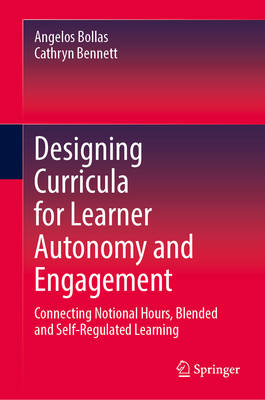
- Afhalen na 1 uur in een winkel met voorraad
- Gratis thuislevering in België vanaf € 30
- Ruim aanbod met 7 miljoen producten
- Afhalen na 1 uur in een winkel met voorraad
- Gratis thuislevering in België vanaf € 30
- Ruim aanbod met 7 miljoen producten
Zoeken
Designing Curricula for Learner Autonomy and Engagement
Connecting Notional Hours, Blended and Self-Regulated Learning
Angelos Bollas, Cathryn Bennett
Hardcover | Engels
€ 198,45
+ 396 punten
Omschrijving
Designing Curricula for Learner Autonomy and Engagement examines how higher education can be reimagined to empower learners as active, self-regulated participants in their own development. Across seven interconnected chapters, the book integrates theory, research, and practice to explore how autonomy and engagement can be systematically fostered in curriculum design, teaching strategies, and institutional policy. Starting with the conceptual foundations of learner autonomy and self-regulated learning, the book situates these ideas within the realities of contemporary higher education, including digital transformation, flexible delivery, and post-pandemic pedagogical change. It repositions notional hours as a learner-centred design tool and illustrates their application through a case study of an undergraduate module redesigned to enhance engagement and independent learning. Building on these principles, the book offers evidence-based frameworks for blended and interactive learning design, showing how Constructive Alignment, Self-Determination Theory, and Universal Design for Learning can be translated into practical strategies for fostering motivation, reflection, and meaningful interaction. Subsequent chapters address the measurement and enhancement of student engagement, introducing ethical, inclusive, and data-informed approaches to assessing behavioural, emotional, and cognitive participation. The discussion extends to institutional and policy levels, exploring how quality assurance systems, curriculum governance, and professional development can support autonomy-oriented innovation. Throughout, the book emphasises the integration of technological and human dimensions of learning, including the emerging influence of generative AI, and advocates for pedagogy that is both evidence-based and responsive to learners' diverse needs. Bridging conceptual insight with actionable guidance, Designing Curricula for Learner Autonomy and Engagement provides educators, curriculum designers, and policymakers with a coherent framework for creating learning environments that cultivate agency, criticality, and sustained engagement in an evolving educational landscape.
Specificaties
Betrokkenen
- Auteur(s):
- Uitgeverij:
Inhoud
- Taal:
- Engels
Eigenschappen
- Productcode (EAN):
- 9783032135193
- Verschijningsdatum:
- 21/01/2026
- Uitvoering:
- Hardcover
- Formaat:
- Genaaid
- Afmetingen:
- 155 mm x 235 mm

Alleen bij Standaard Boekhandel
+ 396 punten op je klantenkaart van Standaard Boekhandel
Beoordelingen
We publiceren alleen reviews die voldoen aan de voorwaarden voor reviews. Bekijk onze voorwaarden voor reviews.








